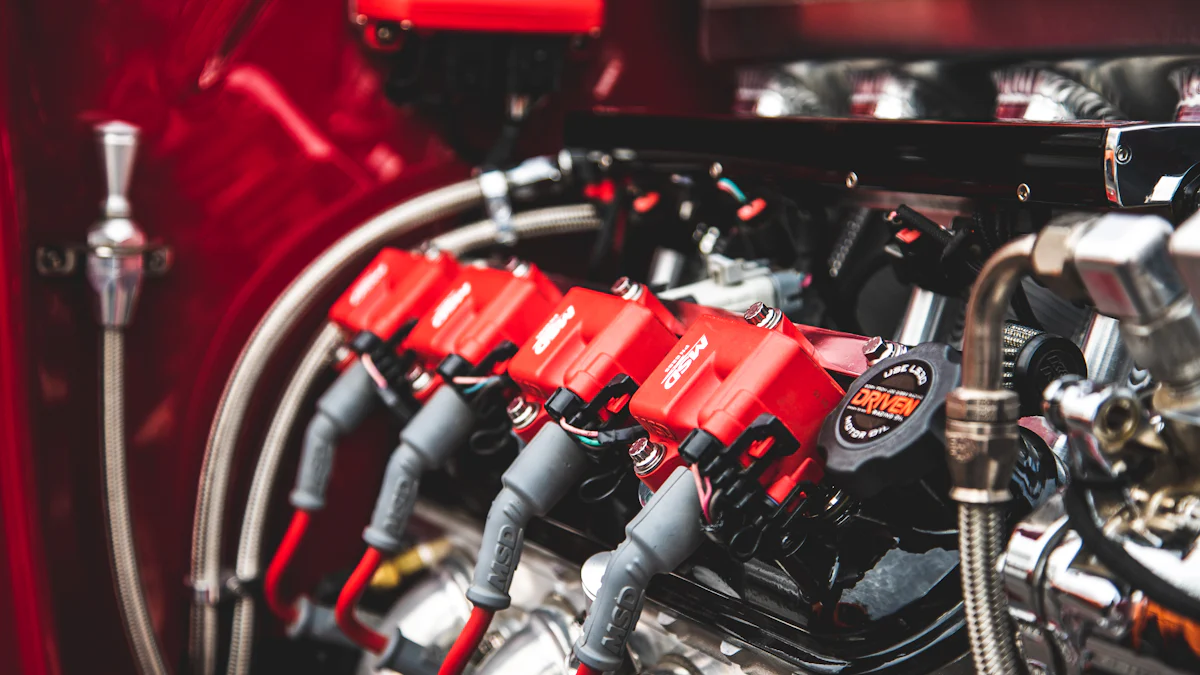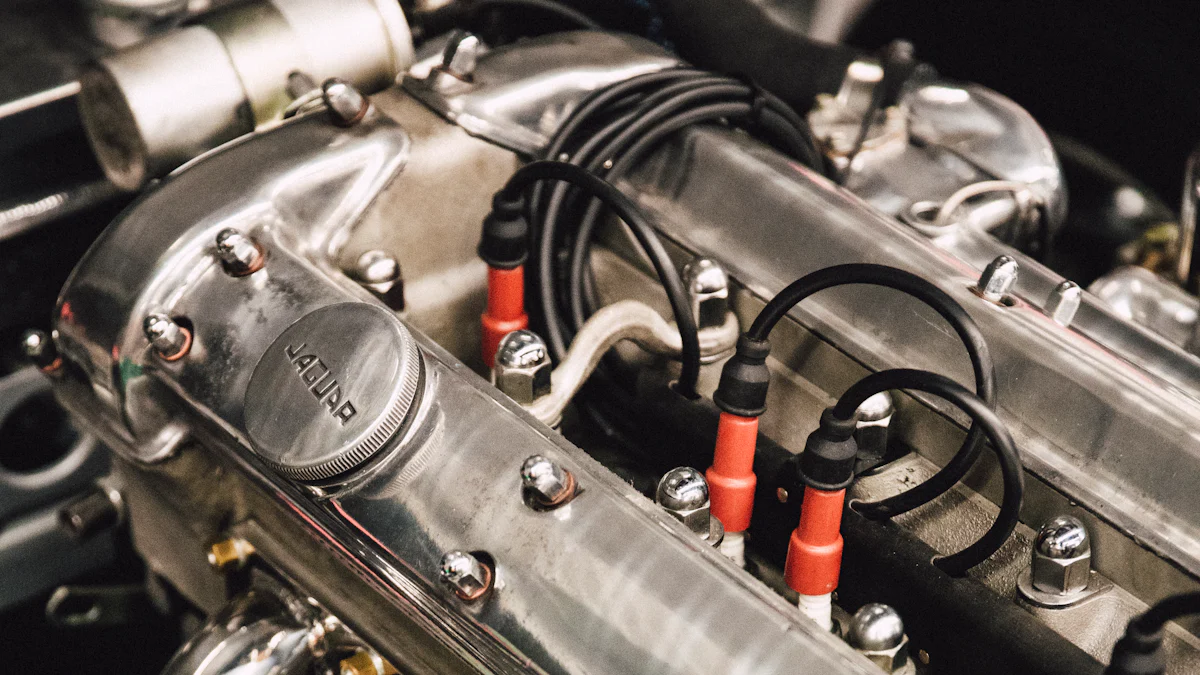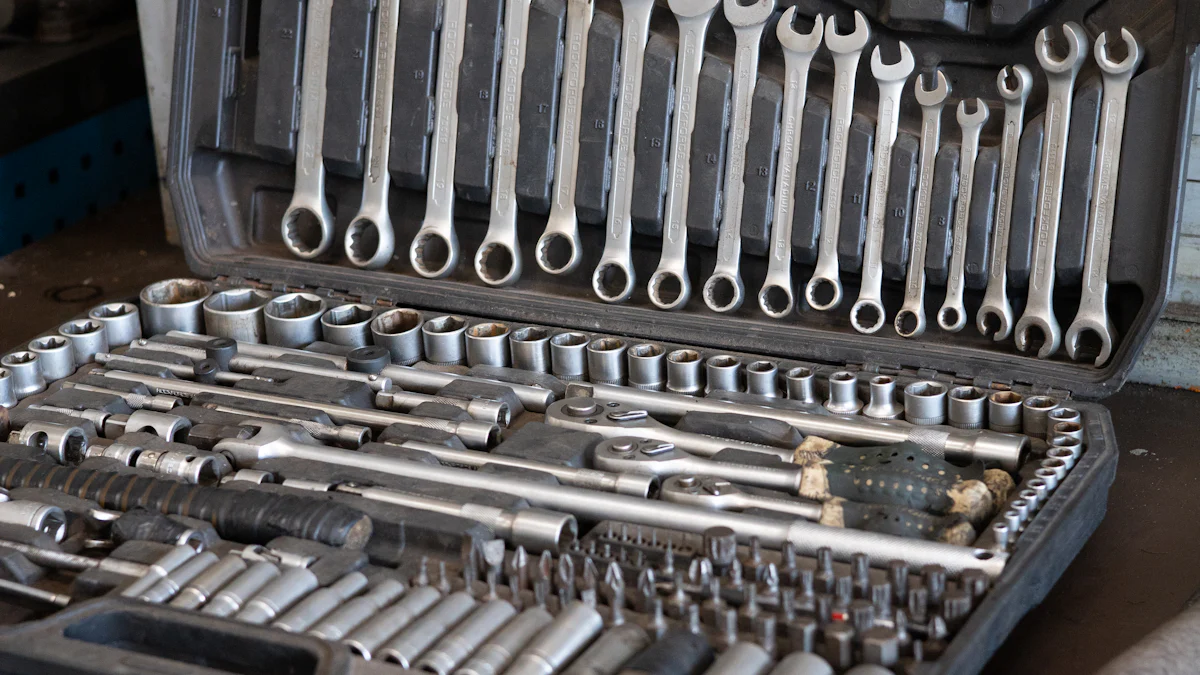
Proper torque for Engine exhaust manifold bolts is crucial in automotive maintenance. Incorrect torque can lead to leaks, compromised engine performance, and potential damage. In this blog, readers will gain insights into the significance of precise ls exhaust manifold bolt torque. Understanding the first and second pass torque specifications, along with installation tips, will ensure optimal engine function and longevity.
Exhaust Manifolds

When it comes to Engine exhaust manifold maintenance, the proper torque for the bolts is of utmost importance. Ensuring that the bolts are tightened correctly can prevent leaks and maintain optimal engine performance. Let’s delve into the significance of precise ls exhaust manifold bolt torque specifications and how they contribute to the overall functionality of your vehicle.
Importance of Proper Torque
Preventing Leaks
Properly torqued exhaust manifold bolts play a critical role in preventing leaks in your engine system. By applying the correct amount of torque, you create a secure seal between the manifold and the engine block, minimizing the risk of exhaust gases escaping and potential damage to surrounding components.
Ensuring Engine Performance
The correct torque on ls exhaust manifold bolts not only prevents leaks but also ensures consistent engine performance. When each bolt is tightened to specification, it helps maintain proper alignment and pressure within the exhaust system. This, in turn, contributes to efficient fuel combustion and overall engine function.
ls Exhaust Manifold Bolt Torque
First Pass Torque Specifications
When dealing with ls exhaust manifold bolt torque, it’s essential to follow a specific tightening sequence for optimal results. Begin by torquing the center two bolts first before moving on to the remaining bolts. Alternating from side to side while working towards the outer bolts ensures even distribution of torque across the manifold.
Second Pass Torque Specifications
After completing the first pass torque specifications, proceed with a second pass to further secure the ls exhaust manifold bolts. Increase the torque level according to manufacturer guidelines, typically reaching 18 ft-lbs for LS engines. This two-step torquing process guarantees that each bolt is properly fastened and contributes to long-term reliability.
Installation Tips
Tools Required
Before starting the installation process, ensure you have all necessary tools at hand. Common tools needed for working on ls exhaust manifolds include a torque wrench calibrated to specifications, high-temperature threadlocker for added security, and appropriate socket sizes for accessing and tightening bolts effectively.
Step-by-Step Guide
- Begin by inspecting the condition of existing exhaust manifold gaskets or seals.
- Remove any debris or remnants from previous installations around the mounting surface.
- Apply a thin layer of high-temperature threadlocker on each bolt before insertion.
- Start torquing from the center two bolts using a crisscross pattern until reaching specified torque levels.
- Proceed with additional passes as required until all ls exhaust manifold bolts meet recommended torque settings.
- Double-check each bolt’s tightness after completion to confirm proper installation.
By following these installation tips and adhering to recommended ls exhaust manifold bolt torque specifications, you can ensure a secure fitment that promotes leak-free operation and optimal engine performance over time.
Chevrolet Silverado Police Pursuit
Overview of the Model
The Chevrolet Silverado Police Pursuit is a vehicle designed with specific features tailored to meet the demands of law enforcement operations. With a focus on performance and functionality, this model ensures that officers can rely on its capabilities in various situations.
Performance Features
- Acceleration: The Chevrolet Silverado Police Pursuit offers impressive acceleration capabilities, crucial for law enforcement activities that require quick response times.
- Braking System: Equipped with advanced braking technology, this model ensures efficient and reliable braking performance, enhancing safety during pursuits and emergency situations.
Engine Specifications
- Powerful Engine: The Chevrolet Silverado Police Pursuit is powered by a robust engine designed to deliver the necessary horsepower and torque required for demanding police operations.
- Fuel Efficiency: Despite its powerful engine, this model also focuses on fuel efficiency to optimize long-term operational costs for law enforcement agencies.
Super Cruise Deep Dive
Law enforcement vehicles like the Chevrolet Silverado Police Pursuit benefit from cutting-edge technologies that enhance both safety and efficiency during operations. The Super Cruise feature takes these advantages to the next level by providing advanced functionalities specifically catered to law enforcement needs.
Technology Overview
- Super Cruise Integration: The integration of Super Cruise technology in the Chevrolet Silverado Police Pursuit allows for semi-autonomous driving capabilities, reducing driver fatigue during extended patrols.
- Enhanced Connectivity: With standard connected camera systems, officers can access real-time footage for improved situational awareness and evidence collection.
Benefits for Law Enforcement
- Operational Efficiency: By leveraging Super Cruise technology, law enforcement officers can focus more on strategic tasks while the vehicle assists in maintaining lane discipline and speed control.
- Safety Enhancements: The advanced safety features offered by Super Cruise contribute to reducing the risk of accidents and ensuring a secure environment for both officers and civilians.
Joyride Episode
The Joyride Episode featuring the Chevrolet Silverado Police Pursuit showcases real-world applications of this specialized vehicle in action. Through firsthand experiences shared by users, we gain valuable insights into how this model performs under different scenarios.
Real-World Applications
- Patrol Operations: Users highlight the effectiveness of the Chevrolet Silverado Police Pursuit in various patrol settings, emphasizing its reliability and performance when responding to emergencies.
- Adaptability: From urban environments to rugged terrains, this model demonstrates adaptability across different landscapes, making it a versatile choice for law enforcement agencies.
User Experiences
- David Griffith, an expert in Law Enforcement Vehicles, emphasizes that top speed is not always a priority for police vehicles like the Chevrolet Silverado Police Pursuit. He states: “One reason that Chevy’s customers probably didn’t want more top speed from the Silverado PPV is that top speed is usually more about the track than law enforcement operations on the street.”
- Acceleration and braking are key dynamic performance concerns for police vehicles. The Chevrolet Silverado Police Pursuit addresses these aspects effectively to ensure optimal operational capabilities on duty.
By exploring the overview, technological advancements, benefits, real-world applications, and user experiences related to the Chevrolet Silverado Police Pursuit, readers can gain a comprehensive understanding of how this specialized vehicle enhances law enforcement operations.
Torque Specifications

ls exhaust manifold bolt torque
When it comes to ls exhaust manifold bolt torque, precision is key. The detailed specifications for torquing these bolts play a crucial role in ensuring the longevity and performance of your engine system. Understanding the specific torque requirements and avoiding common mistakes can prevent issues down the road.
Detailed Specifications
- Evolution of Torque Specifications: Over time, torque specifications have evolved to become essential for proper assembly in engines and vehicle components. This evolution highlights the significance of adhering to specific torque values for optimal functionality.
- Safety and Performance: Proper ls exhaust manifold bolt torque is not just about tightening bolts; it’s about maintaining safety, performance, and component lifespan in modern vehicles. By following manufacturer guidelines, you can safeguard against potential damage and ensure smooth operation.
- Preventing Damage: Highly stressed components like engines require precise torque specifications to establish proper preload and prevent damage. By torquing ls exhaust manifold bolts correctly, you contribute to the overall health of your engine system.
- Historical Context: After World War 2, the use of torque wrenches and defined torque values became standard practice, marking a significant shift towards more accurate and reliable fastening methods in automotive maintenance.
Common Mistakes to Avoid
- Over-Torquing: Applying excessive force when torquing ls exhaust manifold bolts can lead to stripped threads or damaged components. It’s crucial to follow recommended torque values diligently to avoid over-torquing scenarios.
- Under-Torquing: Conversely, under-torquing can result in loose bolts that may cause leaks or compromise engine performance over time. Always use a calibrated torque wrench to achieve the specified tightness accurately.
- Uneven Torque Distribution: Failing to follow the correct sequence when tightening ls exhaust manifold bolts can lead to uneven distribution of pressure across the gasket, potentially causing leaks or misalignment issues within the exhaust system.
- Ignoring Manufacturer Guidelines: Each vehicle model may have unique ls exhaust manifold bolt torque specifications based on its design and materials used. Ignoring these guidelines could result in improper sealing or reduced engine efficiency.
By understanding the detailed specifications for ls exhaust manifold bolt torque and being mindful of common mistakes to avoid during installation, you can enhance the reliability and performance of your engine system for long-term use.
Long Term Review
As time progresses, assessing the Long Term Review of your ls exhaust manifold bolt torque practices becomes essential for maintaining optimal engine function and preventing potential issues down the line.
Performance Over Time
- Consistent Monitoring: Regularly checking the tightness of ls exhaust manifold bolts ensures that they remain within the specified torque range over time.
- Wear Assessment: Monitoring any signs of wear or degradation around bolt connections allows for timely intervention before issues escalate.
- Performance Impact: Properly torqued ls exhaust manifold bolts contribute to consistent engine performance by preventing leaks and maintaining pressure integrity within the system.
- Engine Efficiency: A well-maintained set of ls exhaust manifold bolts supports efficient fuel combustion processes by minimizing air leaks or disruptions in airflow dynamics.
- Durability Factors: Following correct torque procedures enhances the durability of both the bolts themselves and surrounding components by reducing stress points during operation.
- Component Longevity: By adhering to recommended maintenance schedules related to ls exhaust manifold bolt torque, you extend the lifespan of critical engine parts while ensuring reliable operation under various conditions.
Maintenance Tips
- Routine Inspections: Implement a regular inspection schedule for ls exhaust manifold bolts to identify any loosening or signs of wear promptly.
- Replacement Considerations: When replacing gaskets or seals associated with ls exhaust manifolds, always verify that new hardware meets manufacturer-specified torque requirements.
- Environmental Factors: Be mindful of environmental conditions that may impact bolt integrity over time, such as temperature fluctuations or exposure to corrosive elements.
4 . Preventative Measures: Applying a threadlocker compound during installation can provide an additional layer of security against vibration-induced loosening or shifting over extended periods.
5 . Professional Consultation: If unsure about proper torquing procedures or encountering persistent issues with ls exhaust manifold bolts, seek guidance from automotive professionals familiar with your vehicle model’s specifications.
In the realm of automotive maintenance, the significance of adhering to correct torque specifications cannot be overstated. Properly torqued fasteners play a vital role in ensuring structural integrity and preventing damage to critical components like brakes and suspension systems. By following manufacturer guidelines and utilizing torque wrenches for precise tightening, individuals can maintain secure connections that withstand operational forces without risking bolt failure or unsafe conditions. As modern engines evolve with tighter tolerances, embracing accurate torque practices becomes paramount for reliable repairs and long-lasting performance.
Post time: Jun-05-2024



